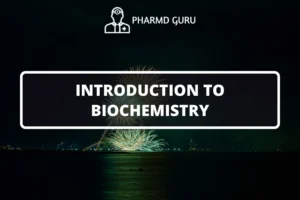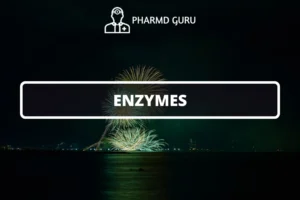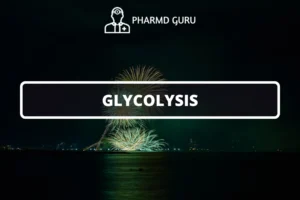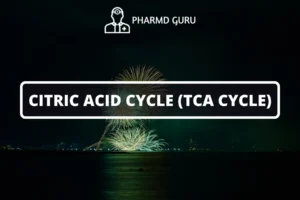Mutation is the process by which changes occur in the DNA sequence of an organism’s genome. These changes can have a significant impact on the genetic information and can arise from various sources, including errors during DNA replication, exposure to mutagens, and spontaneous DNA damage. However, living organisms have evolved intricate repair mechanisms to correct these changes and maintain the integrity of their genetic material. In this article, we will explore mutation, the types of mutations, and the repair mechanisms employed by cells to safeguard their genetic information.
SCROLL DOWN TO THE BOTTOM OF THIS PAGE FOR ACTUAL NOTES.
Table of Contents
- Introduction to Mutation
- Types of Mutations
- 2.1 Point Mutations
- 2.2 Insertions and Deletions
- 2.3 Chromosomal Rearrangements
- Repair Mechanisms
- 3.1 Mismatch Repair
- 3.2 Base Excision Repair
- 3.3 Nucleotide Excision Repair
- 3.4 Homologous Recombination
- 3.5 Non-homologous End Joining
- Significance of Repair Mechanisms
1. Introduction to Mutation
Mutation refers to any change that occurs in the DNA sequence of an organism’s genome. These changes can be heritable and can arise from errors during DNA replication, exposure to mutagens (such as radiation or chemicals), or spontaneous DNA damage due to cellular processes. Mutations can lead to genetic diversity, and in some cases, they can result in diseases or confer advantages to an organism in an evolving environment.
2. Types of Mutations
Mutations can be classified into several types based on the nature of the DNA change and the scale of the genetic alteration.
2.1 Point Mutations
Point mutations involve changes in a single nucleotide base pair within the DNA sequence. They can be further divided into three categories:
- Missense mutations: These mutations result in the substitution of one amino acid for another in the protein sequence, potentially altering its structure and function.
- Nonsense mutations: Nonsense mutations introduce a premature stop codon, leading to the production of a truncated protein.
- Silent mutations: Silent mutations do not affect the protein sequence since they involve base changes that do not alter the corresponding amino acid.
2.2 Insertions and Deletions
Insertions and deletions involve the addition or removal of nucleotides in the DNA sequence. These mutations can cause a frameshift, shifting the reading frame of the codons and leading to the production of an entirely different protein sequence.
2.3 Chromosomal Rearrangements
Chromosomal rearrangements involve alterations in the structure or organization of chromosomes. These mutations can include inversions, translocations, duplications, or deletions of large segments of DNA, potentially affecting the expression or function of multiple genes.
3. Repair Mechanisms
Living organisms have evolved sophisticated mechanisms to repair DNA damage and maintain the integrity of their genetic material. Several repair mechanisms exist to correct different types of DNA lesions.
3.1 Mismatch Repair
Mismatch repair corrects errors that occur during DNA replication, ensuring the accuracy of the newly synthesized DNA strand. Mismatch repair enzymes identify and remove the mismatched base pairs and replace them with the correct bases.
3.2 Base Excision Repair
Base excision repair primarily deals with small DNA lesions, such as damaged bases or single nucleotide modifications. Specific enzymes recognize and remove the damaged base, followed by the insertion of the correct base through DNA polymerase and ligation by DNA ligase.
3.3 Nucleotide Excision Repair
Nucleotide excision repair repairs bulky DNA lesions, such as those induced by UV radiation or certain chemicals. This mechanism involves the removal of a stretch of nucleotides containing the damaged site, followed by DNA synthesis and ligation to restore the original DNA sequence.
3.4 Homologous Recombination
Homologous recombination repairs double-strand breaks, where both strands of the DNA molecule are severed. The broken DNA ends are processed, and a complementary sequence from the sister chromatid or homologous chromosome is used as a template to restore the original DNA sequence.
3.5 Non-homologous End Joining
Non-homologous end joining repairs double-strand breaks by directly ligating the broken DNA ends. This mechanism does not require a homologous template and can result in the loss or insertion of nucleotides at the repair site, potentially leading to mutations.
4. Significance of Repair Mechanisms
Repair mechanisms are vital for maintaining the stability and integrity of the genetic material within cells. They prevent the accumulation of DNA damage and mutations that can lead to genomic instability and diseases such as cancer. These mechanisms ensure the faithful transmission of genetic information from one generation to the next, allowing organisms to adapt and survive in changing environments.
ACTUAL NOTES:




